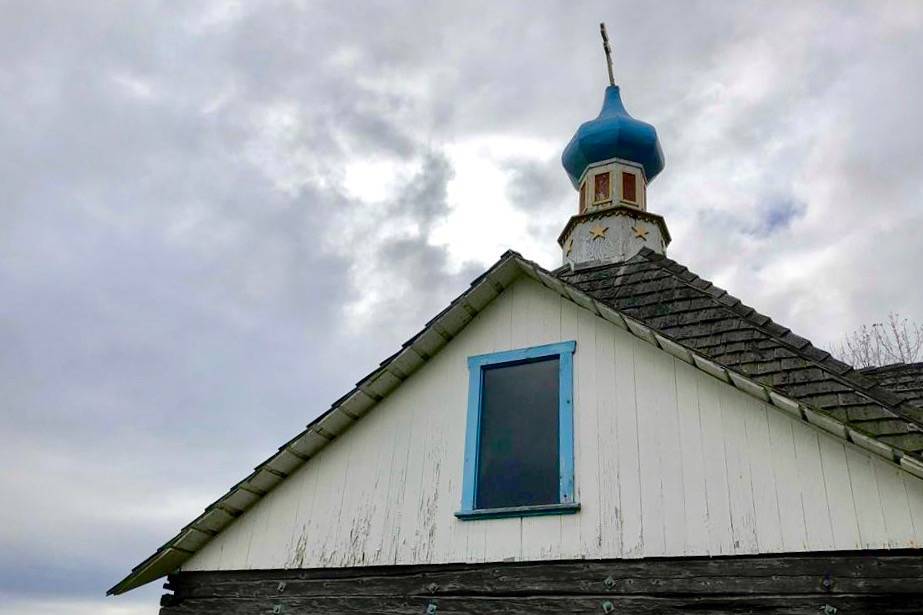The Saint Nicholas Memorial Chapel, one of the most recognized Kenai landmarks, is about to receive some much-needed repairs.
Sunlight shines through holes in the roof and walls of the small, iconic chapel in Kenai’s Old Town. The hand-hewn logs, the once vibrant blue dome and the gold cross on top of the chapel have seen better days.
The chapel has received two grants to help renovate the chapel, which is a National Historic Landmark. Last year, the chapel received a $13,000 donation grant from the Fellowship of Orthodox Christians in America. Earlier last week, the Alaska Historical Commission awarded a $14,964 grant to the chapel.
Dorothy Gray is the treasurer of the nonprofit group Russian Orthodox Sacred Sites in Alaska, the secretary and treasurer for Holy Assumption of the Virgin Mary Russian Orthodox Church in Kenai and a lifelong member of the church. She said the grants will kick-start the chapel’s restoration efforts.
“We are so excited,” Gray said. “Now we can begin work on the chapel, which is greatly in need of repair.”
Gray said the chapel is not only very special for orthodox Christians in Kenai, but to others who visit Kenai in the summertime.
“We get hundreds of people every day in the summer that visit here,” Gray said.
The city of Kenai also recognizes the significance of the chapel, as its image appears on street signs, in the chamber of commerce logo and even on the city seal.
The chapel was built in 1906 at the site of the old Russian Fort and fur trading post, and Kenai’s first church, which was built in 1849. The chapel is the resting place for Kenai’s first Russian Orthodox missionary, Father Iguman Nikolai, his reader Makary Ivanov and another monk whose name was not recorded.
Father Iguman Nikolai brought the smallpox vaccine to Kenai, saving the lives of many Dena’ina.
Gray said Makary Ivanov’s ancestors still live in the area and attend the Russian Orthodox church.
Today the chapel is seldom used, except for special occasions like St. Nicholas Day, when a small congregation gathers for service on Dec. 19.
Money from the grants will buy materials that are historically accurate, like cedar shingles.
“In order to truly be historic preservation, you have to try to use materials that were consistent with that time period,” Gray said. “You can’t put an aluminum roof or a metal roof on the chapel, even though that’d be more water repellent.”
Gray said some updates are allowed. An ice water barrier shield will lay underneath the historically accurate shingles as an extra protectant.
The first phase of the renovation will be to repair the roof, dome and cross. The final phase will be to repair the hand-hewn logs, which are showing weather-related wear and tear.
Gray said she couldn’t remember the last time the chapel received any significant upgrades or repairs. She said it may have been in the 1970s.
“I’m not positive,” Gray said. “I came here in the late 70s and I don’t remember. I do remember somebody putting a new cross on top within that time frame, but it’s been several decades since any renovation.”
Because the chapel is a National Historic Landmark, the National Park Service will provide any architectural plans and structural designs needed for the project.
The repair work will begin next spring.

